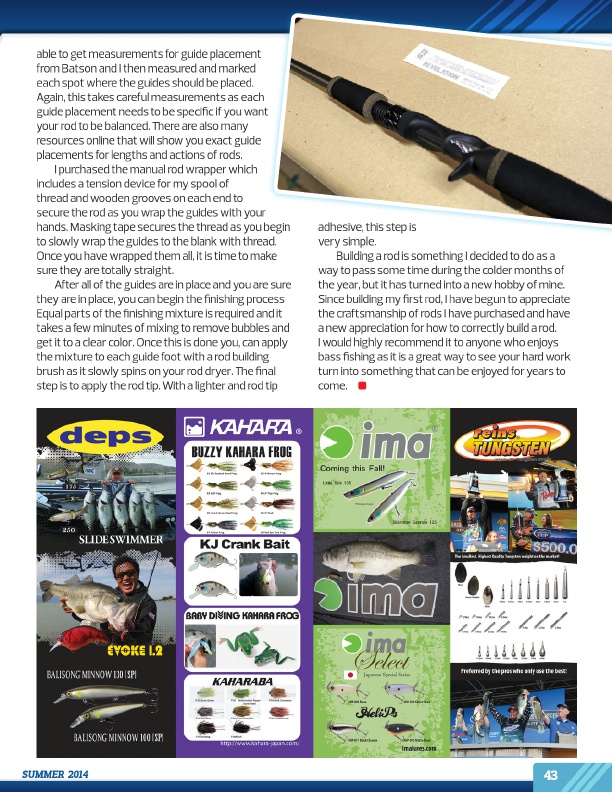
able to get measurements for guide placement from Batson and I then measured and marked each spot where the guides should be placed. Again, this takes careful measurements as each guide placement needs to be specific if you want your rod to be balanced. There are also many resources online that will show you exact guide placements for lengths and actions of rods.
I purchased the manual rod wrapper which includes a tension device for my spool of thread and wooden grooves on each end to secure the rod as you wrap the guides with your hands. Masking tape secures the thread as you begin to slowly wrap the guides to the blank with thread. Once you have wrapped them all, it is time to make sure they are totally straight.
After all of the guides are in place and you are sure they are in place, you can begin the finishing process Equal parts of the finishing mixture is required and it takes a few minutes of mixing to remove bubbles and get it to a clear color. Once this is done you, can apply the mixture to each guide foot with a rod building brush as it slowly spins on your rod dryer. The final step is to apply the rod tip. With a lighter and rod tip
adhesive, this step is very simple.
Building a rod is something I decided to do as a way to pass some time during the colder months of the year, but it has turned into a new hobby of mine. Since building my first rod, I have begun to appreciate the craftsmanship of rods I have purchased and have a new appreciation for how to correctly build a rod. I would highly recommend it to anyone who enjoys bass fishing as it is a great way to see your hard work turn into something that can be enjoyed for years to come.
SUMMER 2014
43
http://optimumbaits.com/